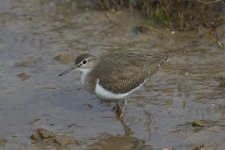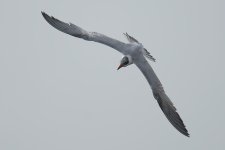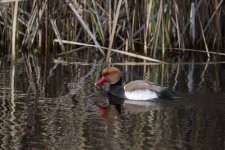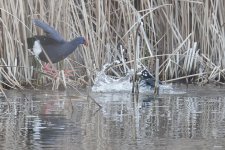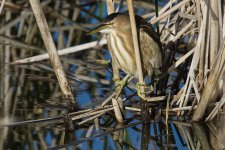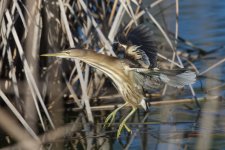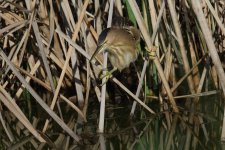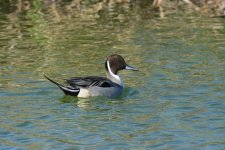kb57
Well-known member

Happy New Year everyone - hope you all have a great year's birding.
This year I have a simple resolution, which is to get out birding a lot more often than I did last year, even if it just means a quick visit to a local site. To help me along and define a target, I'm going to try and achieve the 2024 eBird challenge of an average of one completed list for every day of the year - in practice this means more birding to compensate for days when I don't get out. Less well defined aims like achieving a better work-life balance never work for me, my freelance work has taken up more time than I thought since I packed in my business, although I am going to try and wind down a little, and hopefully make time to learn more Portuguese.
Don't know if I'm going to achieve any of my 'bucket list' targets this year either, which is a bit concerning as I'm not getting any younger...but there are a whole lot of birding opportunities close to hand now to explore, in southern Portugal and Andalucia, so I'm not going to fret about not getting to Antarctica this year!
In terms of my year list, I have a very modest target to surpass of 164 from last year - it would be good to at least reach 200 in Europe this year, which should mean I've been out birding and enjoying the outdoors a little more.
As before, IOC taxonomy and English names (or my imperfect approximation thereof)...lifers in bold and species not seen last year with an asterisk
This year I have a simple resolution, which is to get out birding a lot more often than I did last year, even if it just means a quick visit to a local site. To help me along and define a target, I'm going to try and achieve the 2024 eBird challenge of an average of one completed list for every day of the year - in practice this means more birding to compensate for days when I don't get out. Less well defined aims like achieving a better work-life balance never work for me, my freelance work has taken up more time than I thought since I packed in my business, although I am going to try and wind down a little, and hopefully make time to learn more Portuguese.
Don't know if I'm going to achieve any of my 'bucket list' targets this year either, which is a bit concerning as I'm not getting any younger...but there are a whole lot of birding opportunities close to hand now to explore, in southern Portugal and Andalucia, so I'm not going to fret about not getting to Antarctica this year!
In terms of my year list, I have a very modest target to surpass of 164 from last year - it would be good to at least reach 200 in Europe this year, which should mean I've been out birding and enjoying the outdoors a little more.
As before, IOC taxonomy and English names (or my imperfect approximation thereof)...lifers in bold and species not seen last year with an asterisk
Last edited:




